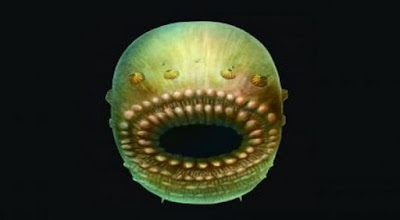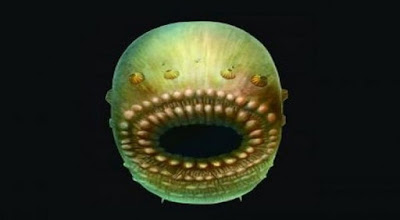The fossil of a tiny sea creature, with a huge mouth and no anus (its mouth was dual-use!), Was discovered by British, German and Chinese scientists in central China. They believe that this is probably the oldest known ancestor of man, who lived about 540 million years ago.
The creature, which belongs to a species hitherto unknown to science, looked like a sack, which is why it was named Saccorhytus ("wrinkled sack"). It is believed to be the earliest specimen in the biological class of secondary ostomies, which includes vertebrate animals.
The researchers, led by Cambridge University professor Simon Conway-Morris in evolutionary paleobiology and published in the journal Nature, believe the organism was the common ancestor of a vast range of species.
It was the first "step" of evolution that led to fish (ten to 15 million years after Saccorhytus), then to land animals and finally - about 200.000 years ago - to modern man (of course this affinity is no longer much visible…).
The earliest secondary estuaries found so far were slightly more recent, 510 to 520 million years old. Saccorhytus is therefore the "patriarch" of all secondary mouths and therefore of all subsequent animals.
It was so small (about a millimeter) that it is estimated that, in the early Cambrian period, it would live in shallow seas between grains of sand at the bottom.
His body was symmetrical (something that people also inherited), he was covered with a thin skin and he had a huge mouth in relation to the rest of his body, from where he took out his feces when he had already eaten. Disgust…
Source: RES - EIA

